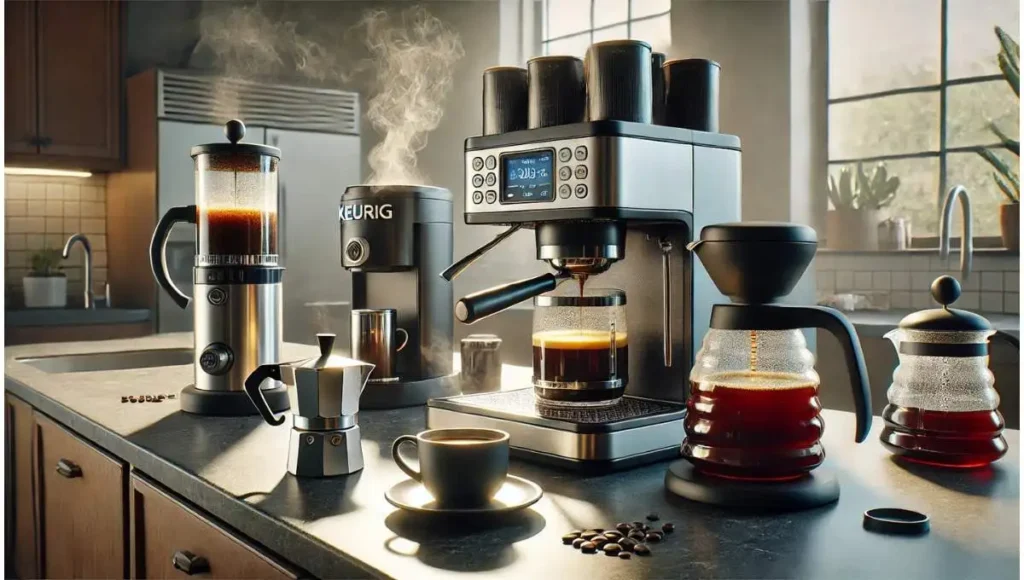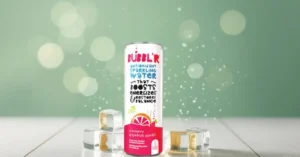A Keurig is one of the most popular coffee makers you’ll find in homes and offices today. They are incredibly easy to use, making them a convenient choice for people who love a quick cup every morning. While they make good coffee, many wonder if the price justifies their value.
Some believe they are too expensive compared to other machines, but the reality is that a Keurig can be quite durable and last for several years with proper care. For those who rely on coffee to fuel their day, investing in a machine that withstands a beating and remains reliable is essential.
When deciding whether to purchase a Keurig, considering its longevity is just as important as evaluating its value and perspective on cost. Many factors determine if it’s the right choice for you, from how often you use it to the maintenance it requires.
Some users hesitate before taking the plunge because they don’t want to spend their hard-earned cash on something that won’t last. However, when analyzed from a guide-like approach, Keurigs offer a worthwhile balance of convenience and performance.
If you want a machine that stands the test of time while delivering a solid brew, a Keurig might just be what you’re looking for.
Keurig Lifespan & Comparison
For many coffee lovers, a Keurig is one of the greatest inventions of the 21st century. It saves time by eliminating the need to grind, assemble, and brew a carafe of fresh coffee every morning. Instead of rising at the crack of dawn, users can enjoy their favorite drinks in just five minutes. The convenient design and no-fuss process make it a staple in households and offices alike.
Keurig Lifespan Facts!
Since its first model, the B2000, was developed in 1998, the brand has continued to improve. By 2004, Keurig machines were widely used in homes, providing an effortless way to make coffee. While the technology has drastically improved over the last twenty years, the basics remain the same—delivering a quick and reliable brewing experience.
The lifespan of a Keurig varies, but most customers report their machines have lasted between three to five years. Several factors influence longevity, such as how frequent the use is and whether proper maintenance is performed. Regular cleaning can help prevent wear, ensuring the machine keeps running smoothly for longer.
Many drinkers rely on Keurig every day, but over time, operation can weaken, and parts may fail. In 2020, an estimated 40% of households were relying on single-serve brewers to start their morning with a hot cup of joe. Eventually, every machine requires a replacement, and understanding the key aspects of proper care can help maximize its value and longevity.
How Long Do Keurigs Last?
The Keurig coffee maker’s life span is usually 3 to 5 years. This lifespan applies with regular home use, specifically brewing one to four cups daily, and with consistent, proper maintenance.
The actual longevity of a Keurig machine can vary significantly based on several key factors:
Regular Descaling:
Descaling the machine two to three times per year to prevent mineral buildup and maintain peak performance. Ignoring descaling can cause malfunctions and a shorter lifespan.
Frequency of Use:
High-volume usage, such as in an office setting or for users brewing many cups daily, can reduce the lifespan to as little as 2 years. Conversely, lighter use may allow the machine to last longer than average.
Model:
Different Keurig models may have varying durability and component quality, influencing their overall lifespan.
Maintenance Practices:
Proper and consistent maintenance is crucial for extending a Keurig’s operational life. This includes:
Daily Cleaning:
Brushing away excess grounds, wiping the needle, and rinsing/emptying the water reservoir after each use.
Monthly Deep Cleaning:
Performing a thorough cleaning procedure once a month.
Comparison to Other Brands
When comparing Keurigs to other coffee makers, their timeframe of 3-5 years is considered high for a home machine. Some brands, like Cuisinart, last between two to five years, while Mr. Coffee averages 2-3 years, and Ninja machines are known for their notoriously short lifespans of only 1-2 years.
On the other hand, brands like Hamilton Beach and Black & Decker have longer durability, often exceeding most Keurigs when given proper care and maintenance. However, the drawback of these brands is the cost in the long run, as they require recurring expenses like buying filters. K-Cups also add to the regular cost, but they can be less expensive since they fill both roles of a filter and ground coffee.
Keurigs are significantly easier to use than traditional automatic brewers, which is why people pay a premium for the convenience. Though expensive, they offer a smoother brewing experience and tend to last slightly longer than average. The increased price ultimately saves time, making it a worthwhile investment for many.
Keurigs vs Manual Brewers

When choosing between a Keurig and manual brewers like the French press, Chemex, or Hario V60, it’s important to consider price, maintenance, and longevity. While manual brewers tend to beat Keurig in terms of lasting longer and costing less, they are less convenient and require attention and effort to use properly.
The decision depends on whether you prioritize customizability, speed, and ease of use. If you enjoy tinkering with your brewing process and are willing to invest time into learning the correct techniques, a manual option may be the right choice.
You’ll spend less money on the machine and maintain it over time. However, if you prefer a hands-off brewing experience, a Keurig is ideal. While you’ll pay more upfront and in the long run, you’ll save time overall since the machine makes coffee quickly every morning. Just be aware that some of the time saved on brewing will go into maintenance, but the ease of use makes up for it.
Signs It’s Time to Replace Your Keurig
If your Keurig is on its way out, there are some obvious signs you need to pay attention to. Monitoring the operation of your maker can help identify issues before it completely dies, saving you from a panic-filled morning without coffee.
A major warning sign is an extra-long brewing time—if your machine, once designed for quick brewing, now takes over three minutes, it may be malfunctioning. Additionally, if the temperature of your coffee is no longer hot, the heating components inside may be failing.
Other warning signs include an inconsistent flavor, weak or watery coffee, or the machine making loud, irregular noises while brewing. If your Keurig is also leaking, it could mean internal parts are worn out. A Keurig nearing the 3 to 5-year mark may still have some life ahead, but if it has been five years or more, then proactively replacing it will ensure you are never without your daily brew.
According to a 2023 survey by the National Coffee Association, about 28% of American coffee drinkers prefer single-serving machines for their caffeine fix. But even the most reliable machines suffer from wear and tear, and a Keurig that suddenly brews longer than usual, delivers a normal cup in five minutes instead of one or two, or has internal components worn out, might need a replacement.
If you notice a clogged water pump, a malfunctioning heating element, or persistent trouble with your brewer, it’s best to start looking for a new one ASAP..
Maintaining Your Keurig for Longevity
Keeping your Keurig in top shape requires performing maintenance regularly. Unlike other home tasks, upkeep is not always apparent, and many people simply enjoy their morning coffee, toss the K-cup, and move on with their day without thinking about freshness in brewing. However, regularly cleaning your brewer is essential if you want to significantly extend its lifespan.
Over time, regular brewing leads to grinds naturally building up inside the machine, along with mineral buildup from the water. To prevent this, running descaling brew cycles as part of your routine helps remove residue, keeping the interior components free from clogging and allowing the machine to function optimally.
How you use your Keurig also impacts its longevity. Some people use it as an alternative to other brewing methods, like a French Press, while others rely on it multiple times a day in a busy home with several people.
The frequency of use causes wear and tear over time, making maintenance essential. Another factor is the model you own—Keurig has released dozens of models on the market, including the recently released K-Brew & Chill, which features the ability to make iced coffee. Regardless of the model, cleaning remains the most directly impactful way to keep your machine working efficiently.
If you’re shaking your head, realizing you haven’t been maintaining your brewer as you should, don’t worry—you’re not alone.
Descaling Your Brewer
Regular descaling of your brewer is essential for removing calcium deposits and scale that build up inside the interior tubes of the machine. Many newer Keurig models will notify you with a descale message when it’s time to run a cycle, but you don’t have to wait for the reminder.
You can use homemade solutions made with water and vinegar, which work perfectly, or purchase pre-made descaling liquids for an easy solution.
Running descaling cycles every 3 to 6 months helps extend your machine’s lifespan. The process takes about 45 minutes and requires running several flush cycles through the pipes inside the unit. To limit buildup in the water tank, consider adding a charcoal filter and using filtered water.
Most Keurig models have a removable water tank that can be placed in the dishwasher regularly to clean both the inside and outside of the machine, keeping it in peak condition.
Running Water Cycles
While descaling your brewer is the best way to keep it functioning well, you can also run general water cycles between sessions to keep your Keurig cleaner. This involves running a regular cycle without adding a K-Cup pod to the maker. By running cleansing brews, you can remove loose coffee grounds that might otherwise end up in your mug. This simple practice helps maintain freshness and reduces the need for frequent deep cleaning.
- Does NOS Energy Drink Have Caffeine? Expert Guide (2025)
- Does Bubbl’r Sparkling Water Have Caffeine? Full Breakdown In 2025
- Does Elderberry Energy Drink Contain Caffeine? Complete 2025 Review
Repair vs Replacement: What to Do at Home?
If you enjoy DIY repairs, it may be possible to fix certain issues with your Keurig if you have the right tools and know-how. A common problem is a clogged water line, which you can attempt to fix by descaling the machine.
This process is easy and involves running a mixture of distilled vinegar and water through the machine to clean it and clear mineral build-ups. Keurig even sells a special descaling solution that works well with its machines. However, over time, parts wear out, and not all internal components are replaceable. Some models allow you to swap out easily-accessible parts like the water reservoir, drip tray, or K-cup holder, and you can find replacement parts online or through Keurig.
If your Keurig is leaking coffee or water, it may be due to a damaged seal or gasket. Replacing these parts can solve the problem, but this is an advanced fix that requires you to disassemble parts of the machine. If you are not comfortable with taking apart your Keurig, the process may become a headache.
In such cases, it might be easier to buy a replacement machine rather than spend time and effort on repairs. When deciding between repair or replacement, consider the cost, time, and how long you’ve already used your Keurig before making a choice that works best for your kitchen.
Best Alternatives to Keurig Coffee Makers

For those who love espresso, Nespresso is the best choice, offering smooth and rich shots with ease. If you want a compact and high-quality espresso machine, the Breville Bambino Plus delivers excellent performance while taking up minimal counter space.
Dual and Durable Coffee Machines
The Hamilton Beach FlexBrew is an affordable dual-brewing system, allowing users to brew both ground coffee and pods. Meanwhile, the Cuisinart SS Series is known for its premium features and durability, making it a long-lasting investment.
Best Manual & Portable Coffee Makers
For those who enjoy manual brewing, the French Press, available from brands like Bodum and Espro, is the best manual alternative, offering full control over the brewing process. If you need something budget-friendly and portable, the AeroPress is a great option for quick, easy, and high-quality coffee anywhere.
How to clean the inside of your Keurig
Regular cleaning of your Keurig is crucial to ensuring it functions efficiently and delivers optimal performance. Here are a few ways to ensure your machine stays in top shape:
Vinegar Cleaning Method
- Fill the water reservoir halfway with white distilled vinegar and the rest with water.
- Place a mug on the drip tray and brew as normal (minus the K-cup).
- Continue brewing until the reservoir is empty, which should make the stream stronger.
- To prevent your coffee from having a vinegar taste, flush the system with clean water afterward.
Keurig Descaling Solution
- Use an official cleaning experience with a descaling solution from Keurig.
- Pour the solution into the reservoir, add water, and follow the same brewing process as with vinegar.
Keurig Rinse Pods for Regular Upkeep
- Pop a Keurig Rinse Pod into the K-cup tray.
- Brew a small cup to remove mineral buildup.
- Always brew a plain cup of water afterward to eliminate any leftover residue.
When to Consider a Replacement
- If you’ve tried multiple cleaning methods and your Keurig is still on the fritz, it might be time to consider getting a new machine.
- For an old school approach, you can invest in a percolator or try an AeroPress for a different brewing experience.
Conclusion
Keurigs typically last longer than most automatic coffee makers, but they also tend to cost more. On average, you can expect your Keurig to last between 3-5 years, as long as you maintain and clean it regularly. If you’re looking for a more affordable option, a manual brewer might be a better choice, offering you the ability to save significant money in the long run. However, you will need to expend more effort when brewing coffee each day.
Ultimately, the decision comes down to whether you prioritize saving money or saving time. While a Keurig will brew your morning coffee quickly and painlessly, it will still need to be replaced within 5 years, and it will cost more than your average coffee maker.
FAQs
Why do Keurigs stop working?
If your Keurig keeps shutting off, it could be due to a needle in the K-cup basket that hasn’t properly punctured the K-cup. Other possible causes include clogged exit needles, a misaligned water reservoir, magnets that aren’t in place, dirty machines, or even faulty outlets. Checking and addressing these issues can help keep your Keurig running smoothly.
How do you know if you need a new Keurig?
You can look out for certain signs to determine when it’s the right time to think about getting a replacement. The most obvious sign that something is wrong with your Keurig is when the brew takes longer than usual. If you notice delays, it may be time to look into a new machine.
How often should I run vinegar through my Keurig?
To encourage the freshest brew, it’s important to descale your Keurig every three to six months—or every three months if you use it daily. This helps maintain performance and ensures the best-tasting coffee.
Why does my Keurig smell like it’s burning?
The problem with the water tank being kept at a high temperature at all times is that if you only rinse the pot quickly instead of washing it properly with soap and water every time you use it, even a minuscule amount of coffee residue can get into the tank. This buildup eventually causes a burnt plastic smell, affecting the taste and freshness of your coffee.
Why does my Keurig coffee taste bad all of a sudden?
If the problem is with the flavor of your coffee, it may just be that your machine is dirty. Try giving your Keurig a deep clean using white vinegar. Simply fill the chamber to capacity and continue running brew cycles until it is empty. Then, repeat the process with water and run brew cycles again until the chamber is fully rinsed.




